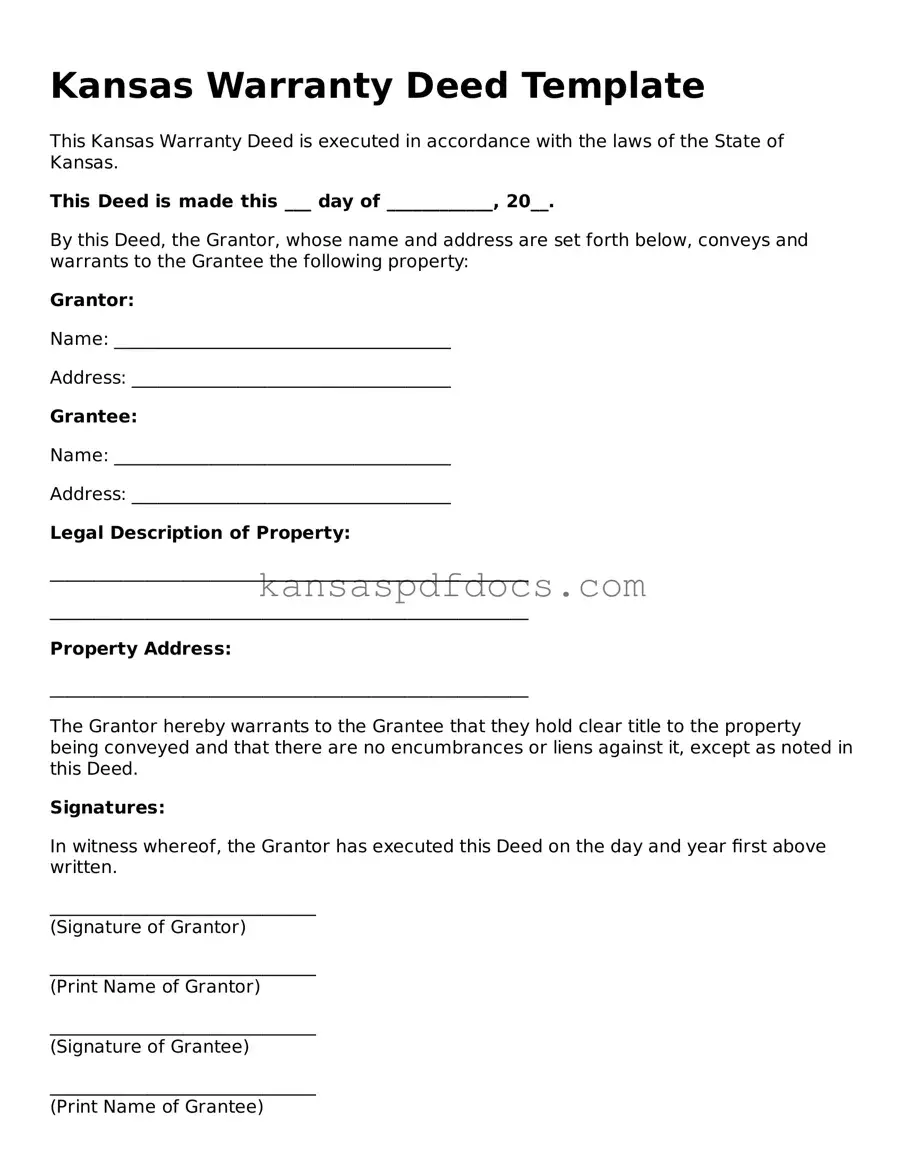When it comes to transferring property ownership in Kansas, understanding the Kansas Deed form is essential. This legal document serves as a formal record of the transfer, detailing the parties involved, the property being conveyed, and any conditions attached to the transfer. A well-drafted deed ensures that the transaction is clear and legally binding, protecting the interests of both the seller and the buyer. Various types of deeds exist, such as warranty deeds and quitclaim deeds, each serving different purposes and offering varying levels of protection. It’s crucial to fill out the form accurately, as even minor errors can lead to complications down the line. Additionally, the deed must be signed and notarized to be valid, and it typically requires recording with the county to provide public notice of the ownership change. Understanding these key aspects can help you navigate the complexities of property transactions in Kansas with confidence.
